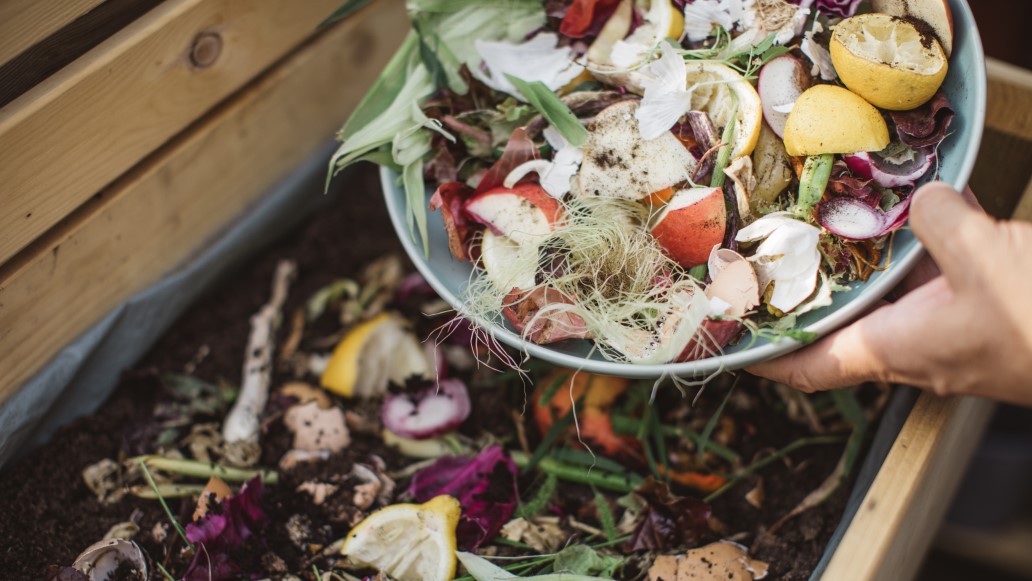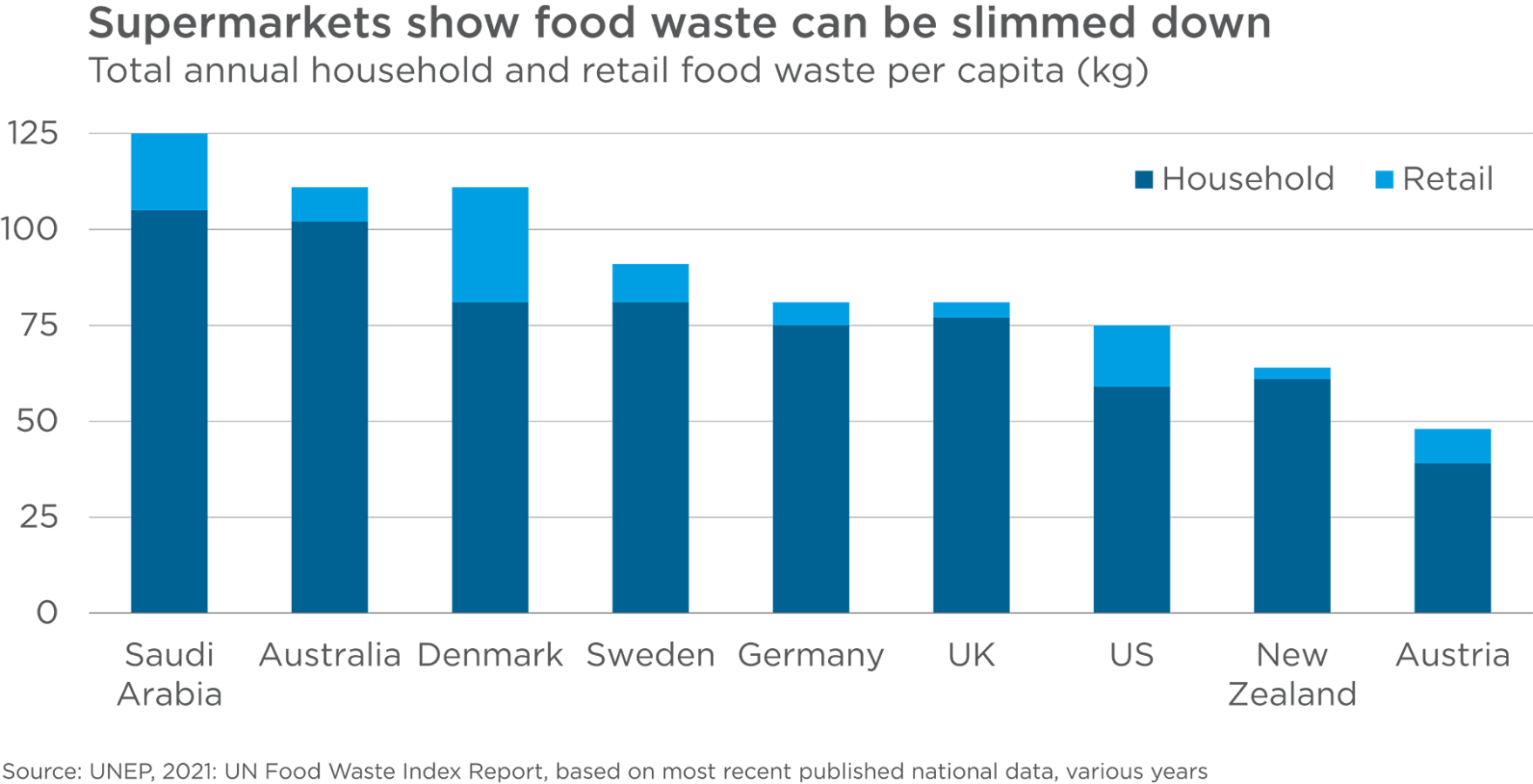From seed to supper: Opportunities in food waste mitigation

Agne Rackauskaite, IMPAX Asset Management
At every stage of its journey from farm or fishery to family dinner, a large slice of the food produced for human consumption is thrown away. The quantity and impact of food loss and waste has grown with rising populations, climate change-driven supply chain disruptions and wider consumption of resource-intensive foods.
The production of food and drinks is ultimately responsible for approximately one-third of global greenhouse gas (GHG) emissions.1 In turn, it is estimated that food loss and waste accounts for between 8% and 10% of GHG emissions worldwide.2
Wasteful practices are ripe for disruption, especially since they carry such a high environmental – and financial – cost. In the US alone, the value of wasted food in 2019 totalled US$285 billion.3
We believe companies that can successfully mitigate food loss or waste with their products and services can offer compelling investment opportunities and play a material role in the transition to a more sustainable economy.
Mountains of food waste – especially in the home
The UN estimates that as much as 39% of the world’s food is lost or wasted and goes unconsumed.4 Wasteful practices can occur at all stages of the food supply chain – in production, processing, retailing and in storage and transport – as well as in the hands of consumers. Household and retail food waste varies widely between countries, driven by factors including consumer behaviour, the structure of grocery markets and waste collection practices.
Authoritative data is relatively limited on this topic, but figures published by the UN demonstrate the scale of food waste in homes worldwide alongside some successes by the retail sector in eliminating waste.5
The graphic below compares annual food waste at the retail and consumer stages, per capita, for nine economies where the UN has a high degree of confidence in both datasets. Taking the example of the UK, where households wasted fully 77kg per person in 2020 – the average weight of a British adult. Yet the UK retail sector jettisoned only 4kg of food per person, demonstrating that good practices can significantly mitigate waste.

Policy tailwinds behind food loss mitigation
Recognising the financial and environmental costs that high levels of waste incur for society, many governments have targets to address the issue. The US, Japan and Australia are among those explicitly aiming to halve food loss by 2030. This aligns with a global target specified by the UN to realise Sustainable Development Goal 12 – to ensure sustainable consumption and production patterns.6
Various governments have launched initiatives, and in some cases enacted legislation, to combat food waste. UK companies can now be fined up to £10,000 for repeatedly failing to address food waste, for instance.7
There have already been successes: in Denmark, the Stop Food Waste Campaign reduced household food waste by 24% per capita between 2013 and 2017 by reducing portion sizes and discounts that encouraged overbuying, and by encouraging diners to take home restaurant leftovers.8
Sources of waste create pockets of innovation
There are opportunities to address food waste in each part of the value chain. Though technological innovation could hold the key to overcoming certain challenges, companies today are already mitigating waste, directly and indirectly, through their products and solutions.
Direct mitigation: nipping waste in the bud
Direct mitigation involves limiting losses at any stage of the food production journey. For a seed manufacturer, mitigation could involve enhancing yields by improving disease resistance and adaptability. Seed companies can also reduce post-harvest losses by improving food products’ shelf lives and resistance to cracking. Japanese company Sakata Seed uses state-of-the-art technology and analytics to help its agricultural customers target crop safety and resolve growth issues.
Efficiencies can be found in food preparation too. Makers of commercial kitchen equipment and technology, like German company Rational, can directly reduce waste by improving the efficiency of professional kitchen operations which, by their large commercial nature, should be much less wasteful with ingredients and portion sizing than households.
Indirect mitigation: ensuring food gets used
Companies that provide food products to consumers typically mitigate food loss indirectly by working to keep it out of landfills and incinerators. Restaurants, supermarkets and food delivery companies inevitably use less than 100% of the food they order or prepare. Some make effective use of the leftovers and peels by donating edible food to local charities and composting the rest or converting it to animal feed.
HelloFresh has designed out waste by shortening supply chains relative to traditional grocers. The German-listed company delivers portion-based meal kits directly to its customers’ doorsteps, thereby reducing overbuying by consumers, controlling portion size and avoiding food wasting away on shop shelves. Researchers concluded that customers in Germany reduced their food waste by 21% (by weight) with HelloFresh orders versus with traditional supermarket shopping, with 72% fewer food scraps.9
Accelerating the transition through efficient food and agriculture
Resource efficiency is a central pillar of the transition to a more sustainable global economy. Given the food sector’s vast environmental footprint, addressing wasteful practices can make a major contribution to meeting emission reduction targets and reducing the ecological impacts of agriculture.
Meanwhile, we believe companies that tackle food waste and are transparent in their disclosures will better navigate evolving norms and laws that demand higher standards across developed markets.
Combined with the enormous financial incentives to reduce costly waste, we perceive long-term investment opportunities where companies offer effective solutions to the challenge. Leaders whose products or services mitigate food waste and advance efficiencies should be well positioned to benefit from, and contribute to, the acceleration of the sustainable transition.
1 P.R. Shukla, J. Skeg et al, 2019. Climate change and land: An IPCC special report.
2 United Nations Environment Programme, 2021: UNEP Food Waste Index Report 2021.
3 ReFED, What is Food Waste.
4 Champions 12.3. SDG Target 12.3 on Food Loss and Waste: 2021 Progress Report.
5 UNSDG, UNEP & WRAP (Waste and Resources Action Programme), 2021: UN Food Waste Index Report.
6 United States 2030 Food Loss and Waste Reduction Goal | US EPA
7 UK Government. Action to reduce food waste announced. 2018.
8 Stop Wasting Food Movement, EU Fusion.
